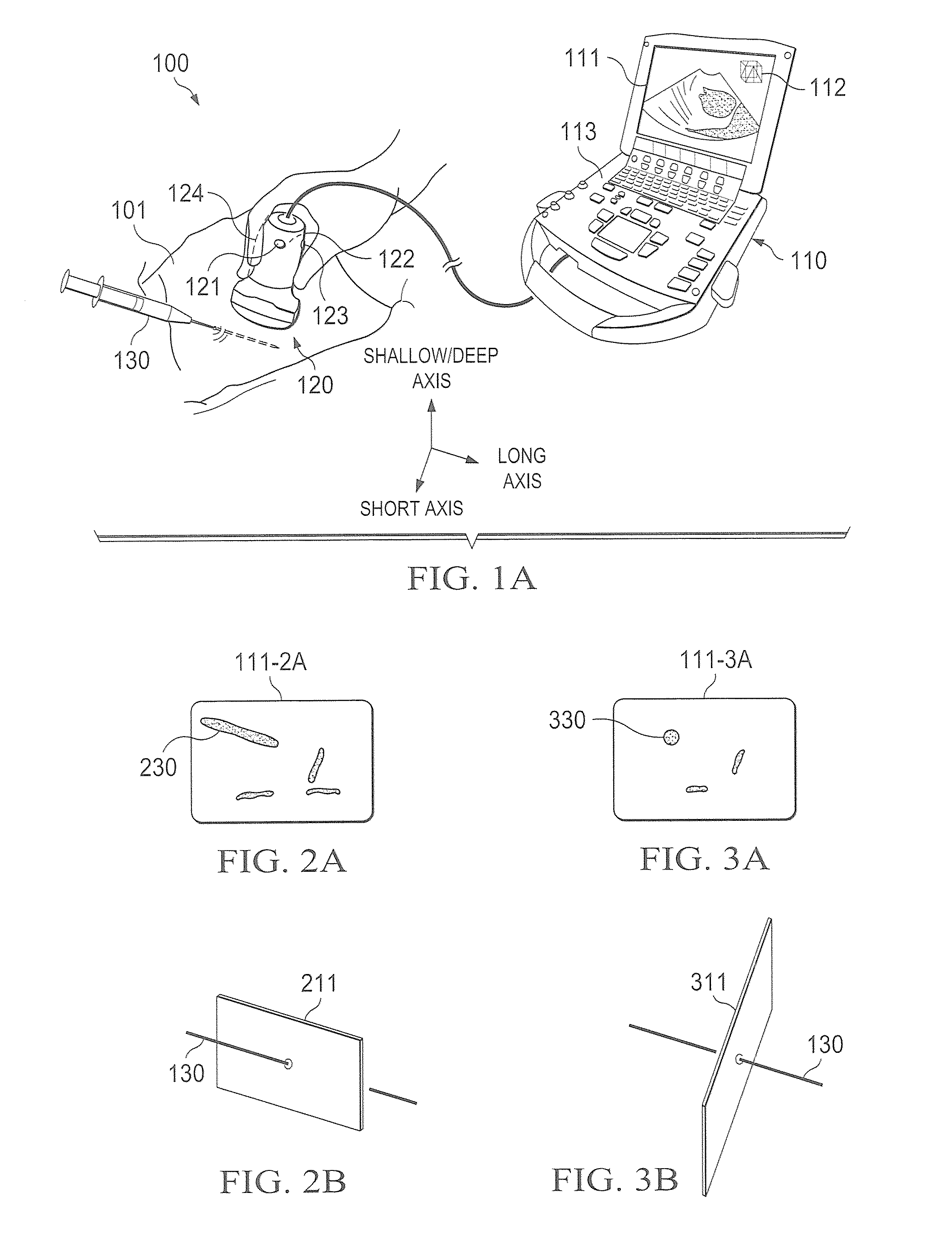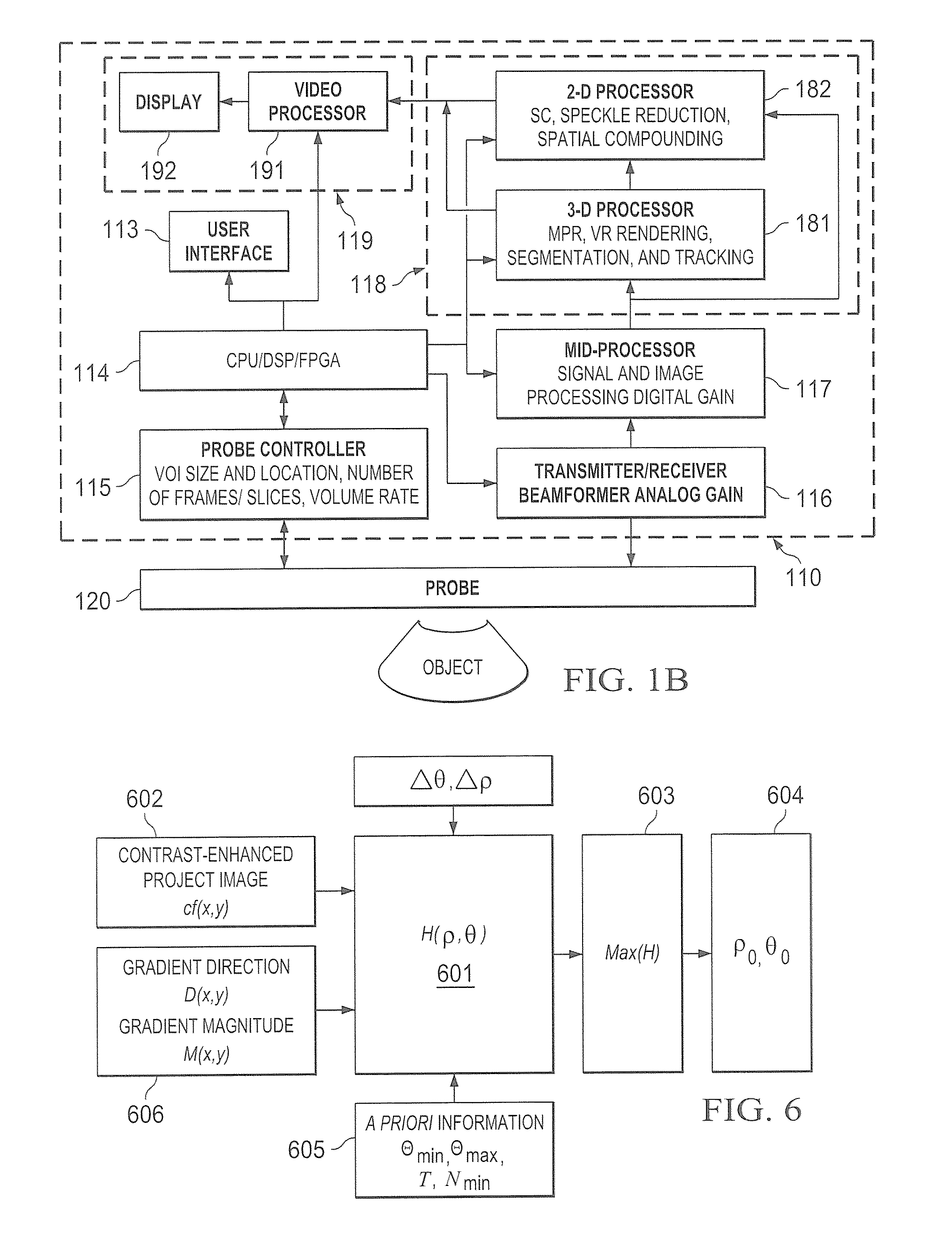Systems and methods to identify interventional instruments
a technology of interventional instruments and systems, applied in the field of identifying interventional instruments, can solve the problems of affecting the visualization speed of interventional instruments, affecting the accuracy of interventional instruments, so as to facilitate rapid visualization of interventional instruments and facilitate user interaction. the effect of little or no user interaction
- Summary
- Abstract
- Description
- Claims
- Application Information
AI Technical Summary
Benefits of technology
Problems solved by technology
Method used
Image
Examples
Embodiment Construction
[0031]Directing attention to FIG. 1A, a system adapted according to embodiments of the invention is shown as system 100. System 100 may, for example, comprise a diagnostic ultrasound system operable to provide 2D and / or 3D images from a multi-dimensional (e.g., 3D and / or 4D) volume dataset. Although embodiments of the invention are described herein with reference to ultrasound imaging technology, in order to aid the reader in understanding the invention, it should be appreciated that the concepts of the present invention are not limited in applicability to ultrasound imaging. For example, embodiments of the present invention may be implemented with respect to fluoroscope systems, X-ray imaging systems, ultrasound imaging systems, CT imaging systems, MRI systems, positron emission tomography (PET) imaging systems, and the like.
[0032]System 100 of the illustrated embodiment includes system unit 110 and transducer 120 coupled thereto. System unit 110 preferably comprises a processor-ba...
PUM
 Login to View More
Login to View More Abstract
Description
Claims
Application Information
 Login to View More
Login to View More - R&D
- Intellectual Property
- Life Sciences
- Materials
- Tech Scout
- Unparalleled Data Quality
- Higher Quality Content
- 60% Fewer Hallucinations
Browse by: Latest US Patents, China's latest patents, Technical Efficacy Thesaurus, Application Domain, Technology Topic, Popular Technical Reports.
© 2025 PatSnap. All rights reserved.Legal|Privacy policy|Modern Slavery Act Transparency Statement|Sitemap|About US| Contact US: help@patsnap.com



